Goth Subculture and Their Tattoos
The Gothic subculture of the 2000s marked a significant period when goths experienced a new wave of popularity and development.
This era was characterized by a surge of interest in dark aesthetics, mysticism, and self-expression through tattoos. In this article, we will explore how goths of the 2000s used tattoos to express their individuality, the main symbols and styles of tattoos of that time, and popular placement areas.
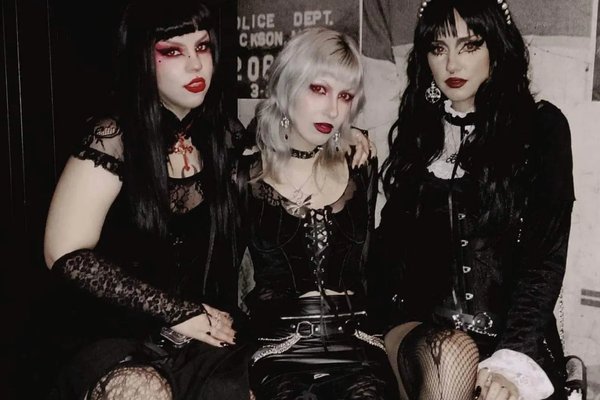
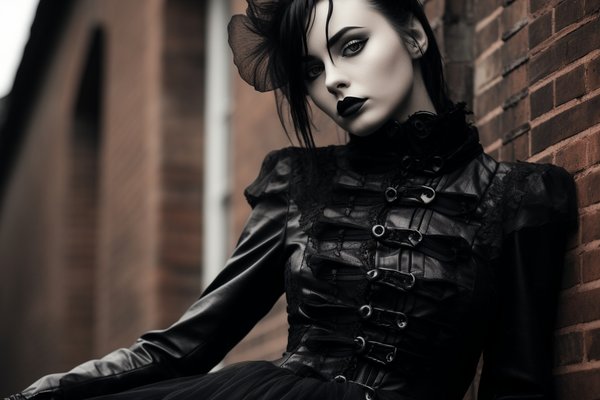
The Revival of Gothic Subculture in the 2000s
The 2000s were a time of revival and reinterpretation of the Gothic subculture.
Inspired by music, cinema, and literature, the goths of the 2000s created a unique style that differed from previous decades. Elements of the Victorian era, punk movement, and fetish culture merged to form the modern Gothic image.
Music
Music played a key role in shaping the Gothic subculture of the 2000s. The emergence of new bands and the development of genres such as gothic metal and symphonic metal contributed significantly to the popularization of the subculture. The band Evanescence, founded in 1995, reached the peak of popularity in the early 2000s with the release of the album "Fallen" (2003). Songs like "Bring Me to Life" and "My Immortal" became anthems for goths due to their dark and emotional lyrics, as well as Amy Lee's powerful vocals. Finnish band HIM, led by Ville Valo, became famous for their unique style, which they called "love metal." Their albums "Razorblade Romance" (2000) and "Love Metal" (2003) brought them international fame. Songs like "Join Me in Death" and "Right Here in My Arms" became cult hits among goths. Finnish symphonic metal band Nightwish, founded in 1996, became one of the most influential in the genre. Albums "Century Child" (2002) and "Once" (2004) solidified their position on the international scene. Tarja Turunen's vocals and epic musical compositions made them icons of the Gothic scene.

Influence of Cinema
Cinema also played an important role in popularizing the Gothic subculture. Films filled with dark aesthetics and profound themes became sources of inspiration for many goths. The film "Interview with the Vampire" (1994), based on the book of the same name by Anne Rice, continued to be cult-favorite in the 2000s. The story of vampires, filled with drama, romance, and darkness, significantly influenced the Gothic subculture. The film "Queen of the Damned" (2002), also based on Anne Rice's book, continued to explore themes of vampirism and dark romance. The combination of Gothic aesthetics and modern music made it popular among goths.
Literature as a Source of Inspiration
Literature had a huge impact on the Gothic subculture of the 2000s, providing a rich source of themes and images for self-expression. Anne Rice and her series "The Vampire Chronicles" continued to be an important source of inspiration for goths. Books such as "Interview with the Vampire" and "Queen of the Damned" became classics of Gothic literature. Neil Gaiman and his works, such as "American Gods" and "The Sandman," attracted the attention of goths with their dark themes, mythological elements, and deep symbolism. Gaiman became one of the favorite authors in the Gothic subculture.
Gothic Fashion and Style
Goths of the 2000s integrated elements of the Victorian era, the punk movement, and fetish culture into their unique style. Black clothing, lace, corsets, long cloaks, and heavy boots became essential parts of Gothic fashion. Makeup also played an important role, with an emphasis on pale skin, dark eyes, and lips.
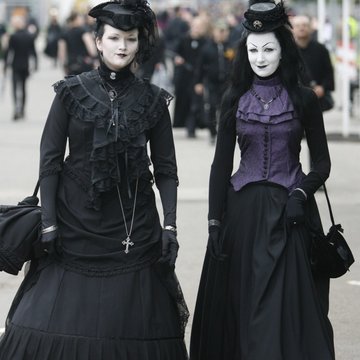

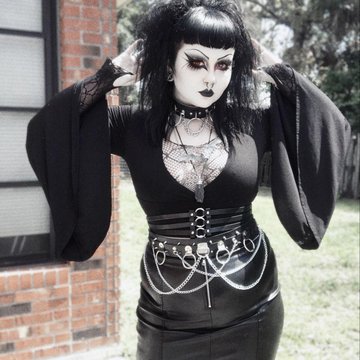
Main Symbols and Their Meanings in 2000s Tattoos
Tattoos became an important element of self-expression for the Gothic subculture of the 2000s.
During this period, many goths used symbols filled with deep meaning and historical significance. Here are some popular symbols and their meanings:
- Ankh (Egyptian Cross)
- The ankh, also known as the "Egyptian cross," is one of the most recognizable symbols of the Gothic subculture. Its origins trace back to Ancient Egypt, where it symbolized eternal life and rebirth. The ankh is often depicted in the hands of gods, emphasizing its importance in Egyptian culture. For the goths of the 2000s, the ankh embodied mysticism and spirituality, as well as a connection to ancient traditions and the cult of death and rebirth. Tattoos with ankhs often included additional elements such as pharaohs, Egyptian gods, or pyramids to enhance the symbolic meaning and aesthetic impression.
- Pentagram
- The pentagram, a five-pointed star, is one of the oldest and most powerful symbols used in various cultures and religions. In the Gothic subculture of the 2000s, the pentagram symbolized magic and protection. This symbol was often used to denote affiliation with occult teachings and the practice of magic. The pentagram enclosed in a circle represents the protection and harmony of the five elements: earth, air, fire, water, and spirit. It also symbolizes balance and inner strength. For goths, the pentagram was a sign of individuality and spiritual quest, often becoming a central element of tattoos surrounded by mystical and occult motifs.
- Gothic Castles and Ruins
- Gothic castles and ruins are vivid symbols of romanticism and mystery. They embody a connection to the past, a quest for the unknown, and a love of history. Such tattoos often depicted majestic castles against the backdrop of the moon or surrounded by dark forests, creating an atmosphere of mystery and melancholy. For the goths of the 2000s, Gothic castles and ruins symbolized their deep philosophical reflections and inner world filled with romantic notions of the past. These tattoos highlighted their love for antiquity and dark aesthetics, as well as their desire for aesthetically rich self-expression.
- Black Cats and Ravens
- Black cats and ravens hold a special place in Gothic symbolism. They represent symbols of mysticism and omens. Black cats, traditionally associated with witches and magic, symbolize independence, mystery, and intuition. Ravens, on the other hand, are often associated with wisdom and omens, thanks to their connection to myths and legends. Tattoos depicting black cats and ravens for the goths of the 2000s were not just decorative elements but expressions of their inner world and a quest for the mystical. These symbols were often complemented by the moon, stars, or skulls to enhance their meaning and create a richer and more mysterious composition.
- Celtic Patterns and Crosses
- Celtic patterns and crosses are among the oldest and most universal symbols that found their place in the Gothic subculture of the 2000s. Celtic patterns symbolize eternity and infinity, expressing a connection to nature and ancient traditions. Celtic crosses, combining Christian and pagan elements, symbolize harmony and spiritual rebirth. For goths, Celtic patterns and crosses were symbols of their deep connection to history and nature. Tattoos with these elements often included intricate interweaving of lines and patterns, creating the impression of endless movement and harmony. These symbols emphasized their respect for ancient traditions and a quest for spiritual growth.
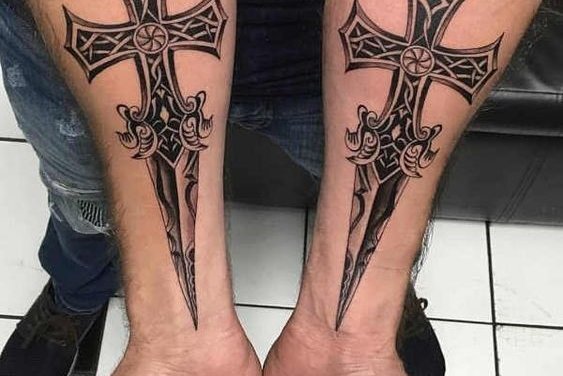

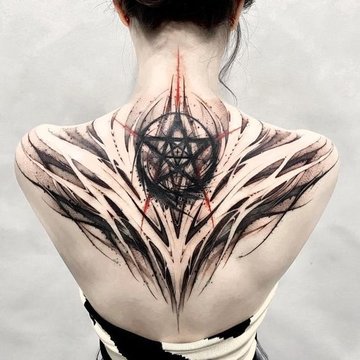
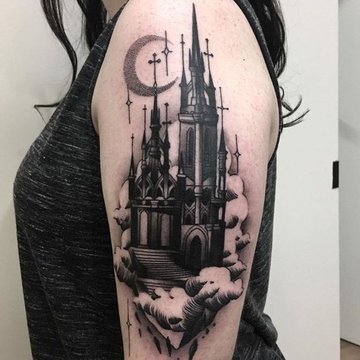

The Gothic subculture of the 2000s made a significant contribution to the development of tattoo art, bringing dark aesthetics and deep symbols into it.
Tattoos became an important means of self-expression for goths, allowing them to showcase their individuality and philosophy. If you want to create your unique Gothic tattoo, visit VEAN TATTOO studio, where experienced artists will help bring your ideas to life.






